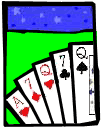Conjunctions

Conjunctions connect words or groups of words.
Coordinating Conjunctions
 |
A coordinating conjunction is a word that connects two words or two groups of words that are used in the same way—that is, they are the same part of speech or they are grammatically alike. The coordinating conjunctions are and, but, for, nor, or, so, and yet.
Do you want to play checkers or cards?
We're going to be Calvin and Hobbes this Halloween.
Correlative Conjunctions
Correlative conjunctions are always used in pairs. They connect two words or two groups of words that are used in the same way—that is, they are the same part of speech or they are grammatically alike. They include both . . . and; either . . . or; neither . . . nor; not only . . . but; and whether . . . or.
Both Andy and Rex are coming to dinner.
I would like either a red marker or an orange marker.
Subordinating Conjunctions
A subordinating conjunction is a word that connects two groups of words that are not used in the same way—that is, they are not the same part of speech and they are not grammatically alike. Some common subordinating conjunctions are after, because, before, how, if, since, than, though, until, when, where, and while.
Bobby played in the park until it got dark.
The movie was funnier than I had expected.
Sometimes a subordinating conjunction comes at the beginning of a sentence.
Since you are here, let's rehearse.
After Margaret had lunch, she took a nap.
See also: Conjunctions: The Ties That Bind and Subordinating Conjunctions.
